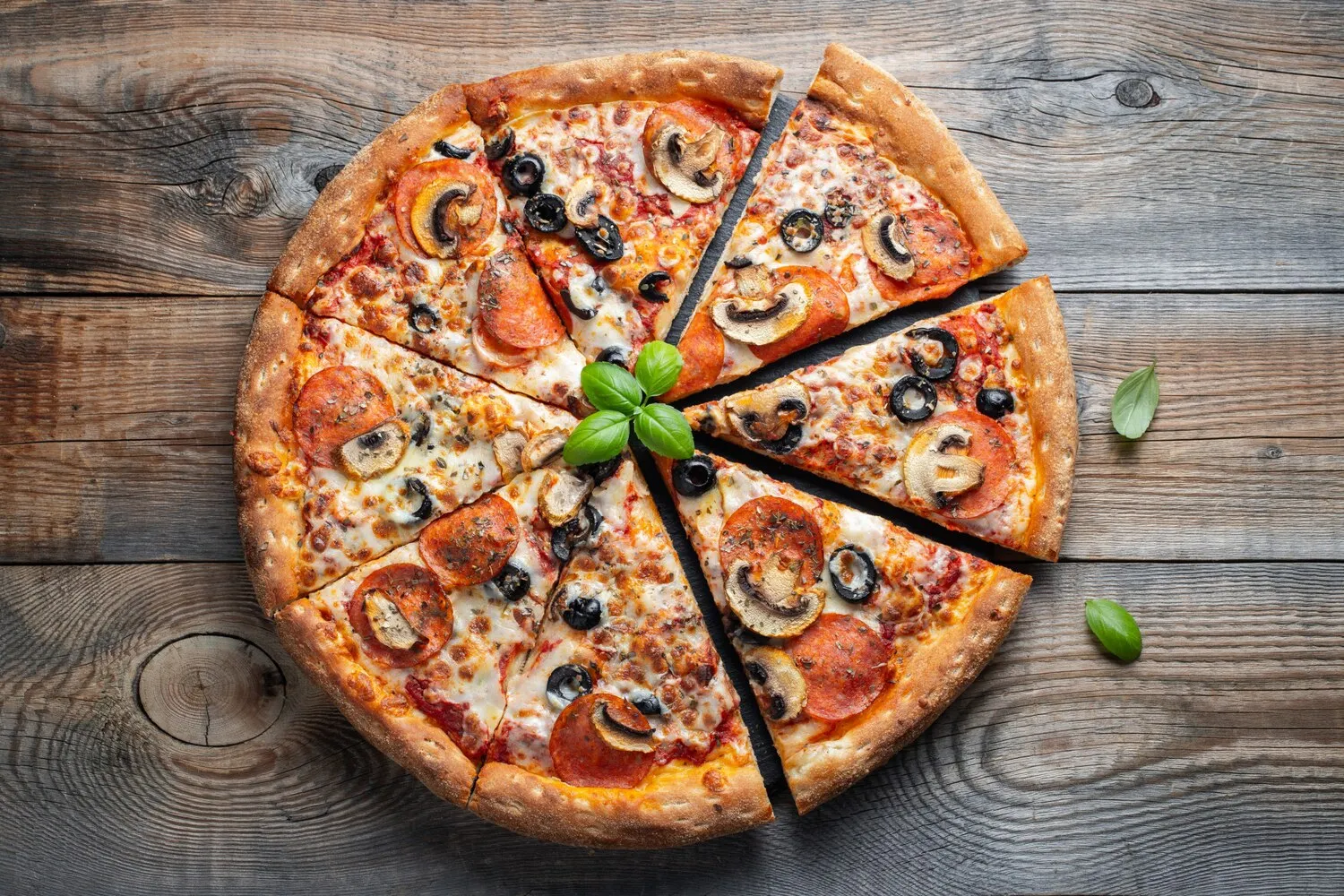
Pizza
Mastunicola offers a variety of pizzas. Based on reviews, pizzas appear to be a popular choice.
Nutrition Facts
* The % Daily Value (DV) tells you how much a nutrient in a serving of food contributes to a daily diet. 2,000 calories a day is used for general nutrition advice.
Pizza's origins can be traced back to ancient civilizations using flatbreads. However, the modern pizza as we know it originated in Naples, Italy, in the 18th or early 19th century. It was initially a food for the poor, sold by street vendors and baked in basic ovens. The addition of tomatoes, brought from the Americas, was a key factor in its development.
Pizza has become a global culinary phenomenon, deeply ingrained in the culture of many countries beyond its Italian origins. It represents comfort food, social gatherings, and regional variations.
Family Meal
Pizza is often enjoyed as a family meal, promoting sharing and togetherness. Ordering pizza is a common tradition for casual nights in or celebrations.
Regional Variations
Different regions have developed their own pizza styles, such as New York-style, Chicago deep-dish, and Detroit-style, reflecting local tastes and ingredients.
Social Food
Pizza is a popular choice for parties and gatherings due to its easy sharing format and wide appeal.
Pizza offers a diverse range of flavors depending on the toppings and crust style. From simple and fresh to rich and savory, the possibilities are endless.
The flavor profile is largely determined by the toppings. A classic Margherita features fresh tomatoes, mozzarella cheese, and basil, providing a balance of acidity, creamy richness, and herbaceousness. Pepperoni adds a spicy, meaty flavor, while mushrooms bring an earthy umami. The crust itself contributes flavor through fermentation, baking techniques, and ingredients like olive oil or herbs. Different cheeses, such as provolone, parmesan, or ricotta, create distinct tastes and textures. Pizza sauces range from simple tomato purees to complex, herbed concoctions.
Dough Quality
Use high-quality flour and allow the dough to proof properly for optimal flavor and texture. Cold fermentation is generally preferred.
Oven Temperature
A high oven temperature (ideally 450-500°F or higher) is essential for a crispy crust and evenly cooked toppings. A pizza stone or steel can help retain heat.
Topping Balance
Avoid overloading the pizza with toppings, as this can result in a soggy crust. Maintain a balance of flavors and textures.
Fresh Ingredients
Using fresh, high-quality ingredients will significantly enhance the flavor of the pizza.
Explore additional Pizza dishes and restaurants
Explore PizzaDiscover top dining spots and culinary experiences in Palermo.
Explore PalermoLearn more about the food culture, restaurant scene, and culinary heritage of Italy.
Explore Italy